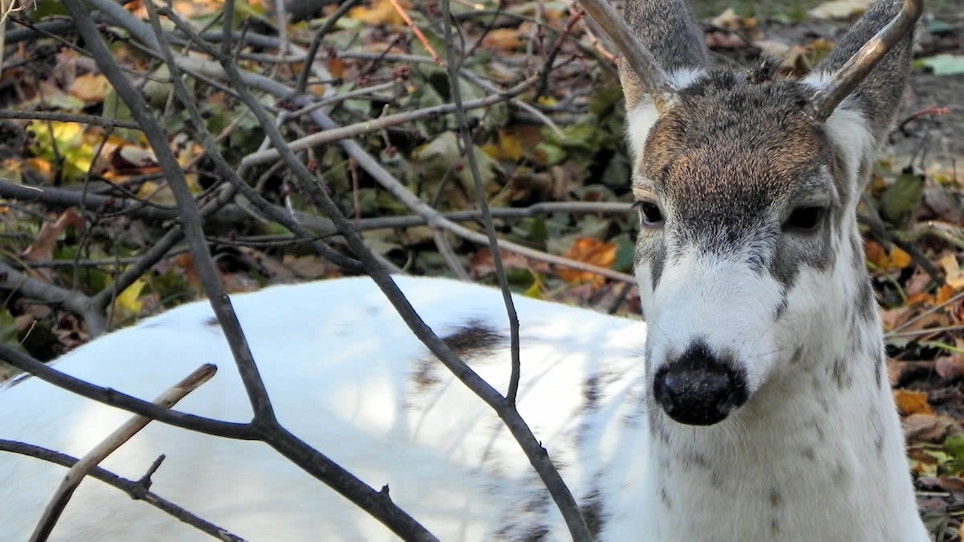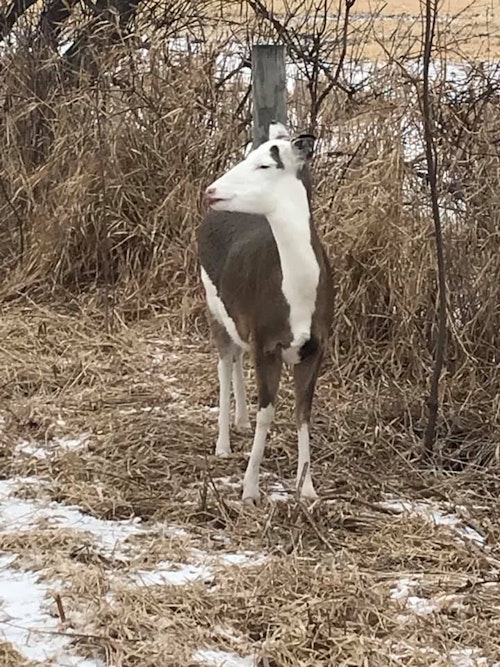
Photo: Bob Adams/New Jersey Department of Environmental Protection
Those driving along Wisconsin's I-41 spotted what was thought to be a lean-looking calf moving along the same interstate for a Sunday morning stroll. Police were dispatched from the station in Lomira only to discover a piebald deer instead, according to Milwaukee's WTMJ-TV.
The deer was nearly solid white in the head and neck area, yet most of its body was brown. The animals stomach and lower legs down to its hooves were white as well, essentially four white socks.
According to the Quality Deer Management Association (QDMA), piebaldism, as it's known, is a rare genetic anomaly in whitetails. "(It) can include a range of potential deformities, from coat coloration to skeletal alignment, from mild to severe. This is because some of the same genes that code for coat color also code for other physical traits. Shortened or crooked legs, hooves and spine are sometimes part of the visible problems."
The QDMA received x-rays of a piebald fawn discovered by Missy Runyan, a wildlife rehabilitator in Hunter, New York. Runyan had responded to a call reporting a fawn in distress. Almost completely white with severe birth defects, you can view the fawn's x-ray at the association's website.
An extreme case, the fawn had a crooked spine, twisted legs and malformed hooves. However, piebald deer with less severe cases are healthy enough to survive in the wild, and sightings of such deer are periodically reported by deer hunters.
While rare, piebald deer are estimated to be more common than albino whitetails. QDMA says piebadlism is a recessive trait requiring both a male and female to carry the trait before there's any chance of producing piebald fawns.
Take a look at this video to learn more about piebadlism, and see a newly born piebald fawn at the University of Georgia's Deer Research Facility.
If you've seen a piebald deer or have captured images of one, let us know in the article comments below. Or send an email to amy.hatfield@grandviewoutdoors.com.






